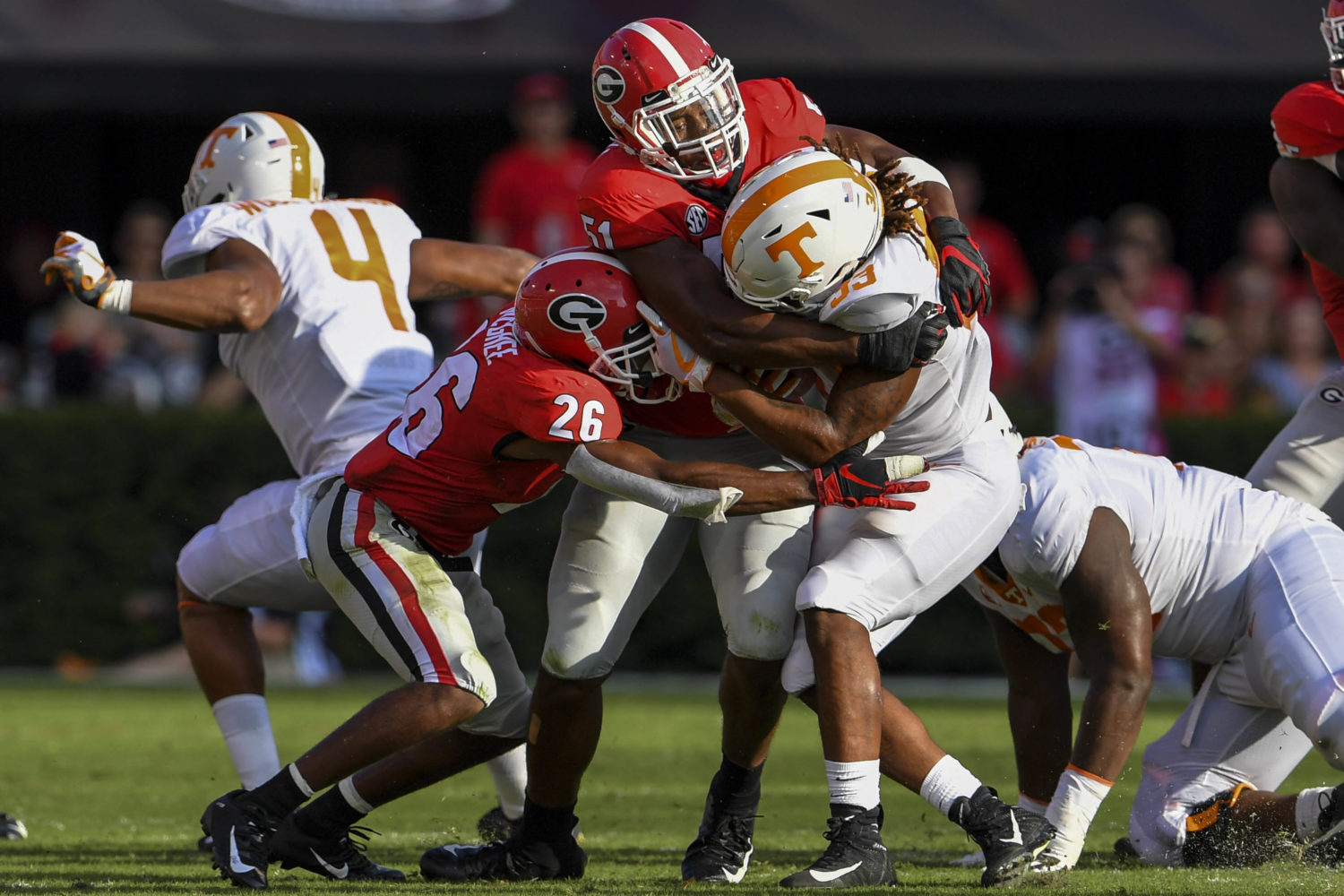
Georgia football: 3 ways this year’s defense is better than the 2018 version
By Sydney Hunte
Published:
When Mel Tucker left Georgia in the offseason to become the new head coach at Colorado, his mark on the Bulldogs’ defense was evident. Georgia ranked T-14th in the country in points allowed per game last year while residing at No. 31 in fewest yards rushing allowed per game. It was a bit of a tough act to follow for Dan Lanning, hired from Memphis before the 2018 season as the outside linebackers coach and appointed to Tucker’s old post when the latter headed to Boulder.
So far, Lanning has been more than up to the task as the Dawgs are among the best in the country in many major defensive categories over the first 5 games of the season. One obvious improvement has been the pass rush. The Dawgs already have 15 sacks after recording just 24 in 14 games last season.
But I wanted to a look at another key stat, and then peel the curtain back a little more to look at 2 more that might not be as “accessible” as others, to show why this Bulldogs defense is better than last year’s group.
A Top 5 rushing defense
Georgia was good against the run in 2018, but there were a few games that its defensive line failed to establish any traction: against Texas in the Sugar Bowl, Missouri, and Alabama in the SEC Championship Game come to mind. The Bulldogs didn’t really get gashed in those — the Longhorns needed 49 carries for their 178 yards, while the Tigers gained 172 yards on 37 carries and the Tide needed 29 attempts to get to 157 yards — but they gave up 10 rushing touchdowns in those 3 games combined.
The LSU game was an outlier: The Dawgs allowed 3 touchdowns and were ripped for a season-high 275 yards on 51 carries, with quarterback Joe Burrow ending the day with 66 yards and 2 touchdowns on 13 attempts. Even with that, Georgia still ended the season allowing 130.6 rushing yards per game. Good, but not great.
That has changed in 2019: Through 5 games, Georgia has allowed just 59.6 yards per game on the ground, 5th in the country in that department. It’s also 1 of 2 teams in FBS (the other is Iowa) that has not allowed a rushing TD. Lanning and defensive line coach Tray Scott have pulled all the right levers to lift this run-stopping corps into elite status, and that should inspire confidence on Saturday against a South Carolina team with 2 backfield threats in Rico Dowdle and Tavien Feaster.
An impressive 2nd-half scoring defense
For this, I had to do a little more digging because it might not be found in traditional stat breakdowns, but I think it speaks in part to how Lanning has been able to make proper halftime adjustments as needed. The Bulldogs rank 2nd in the country in 2nd-half points allowed per game with 1.8, according to TeamRankings.com. They finished last year with 11.5.
This will be interesting to track over the coming weeks and even more so as the Bulldogs enter the tougher portion of their schedule. Still, this is an impressive stat, especially as we saw a tangible example of those halftime (and, really, mid-2nd quarter) adjustments against Tennessee and late in the Notre Dame game.
Fewer red-zone opportunities and fewer sustained drives allowed
This point goes hand-in-hand a little with Georgia’s defense yet to allow a rushing touchdown. Looking a bit more broadly, though, not only is it a struggle for teams to run against the Bulldogs, it’s tough to get into the red zone, too.
Georgia has allowed just 14% of drives all season (9 out of 61) to enter the red zone, tied for 2nd-fewest in the country behind Iowa’s 6. Out of 61 drives, 9 have gone for 60 yards or more (one being the long pass play to Marquez Callaway during the Tennessee game, so that wouldn’t count as a sustained drive).
Again, we’ll see how this, and other stats, hold up as the season progresses, but if the Bulldogs can keep riding this wave of defensive success, it’s hard to see any team beating them.
Sydney is an Atlanta-based journalist who has covered everything from SEC and ACC football to MLS, the U.S. men's national soccer team and professional tennis. His work has appeared on such platforms as SB Nation, Cox Media Group and FanSided.







